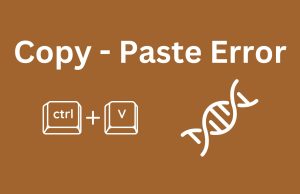In the bustling corridors of commerce and industry, the term ‘productivity’ is often synonymous with financial gain and market expansion. But within the altruistic heart of the nonprofit sector, this prevalent measure of success seems oddly misplaced. Nonprofit organizations are, after all, not in the business of wealth accumulation, but rather in the noble pursuit of societal improvement. So arises a pivotal question: How do we redefine productivity in a way that is true to the essence of nonprofit work?
The conventional productivity metrics—profits, share prices, and returns on investment—fit awkwardly with the mission-driven model of nonprofits. These organizations deal in change, not chattels; their currency is social progress, not stock prices. It is, therefore, fitting that we seek alternative means of gauging their impact—an approach that quantifies success not through the lenses of economic output, but by the clarity of positive change brought into the lives they touch.
Take, for instance, a nonprofit focused on health and wellness advocacy. Its productivity might be measured by the number of individuals it reaches through its programs, the extent to which public policies are influenced, or the degree to which community health outcomes are improved. These indicators, far removed from the balance sheet, are vibrant testaments to the organization’s effectiveness and the richness of its contributions to society.
From this vantage point, several nonprofit leaders have begun to craft a new narrative of productivity. They pinpoint key performance indicators such as stakeholder engagement, volunteer retention rates, and the scope of their outreach programs. They speak of ‘impact accounting’—a language that articulates achievements in educational advancement, environmental preservation, and health improvement. And in these accounts, the true wealth of a nonprofit is revealed.
The journey to redefine productivity in the nonprofit sector also involves sharing tales of transformation that resonate with the ethos of their work. These narratives move beyond the limits of quantifiable output and enter the realm of qualitative storytelling, where success is also the sum of lives changed, spirits lifted, and communities empowered.
This discourse is not just theoretical; it’s practical and increasingly urgent. Nonprofit professionals must weave these new threads of productivity into the fabric of their organizational strategies. By incorporating impact-driven benchmarks into their strategic planning, nonprofits can create actionable roadmaps that align closely with their core mission, thereby enhancing their effectiveness and the potency of their advocacy.
Our thought-provoking foray into this reimagined productivity landscape is more than an intellectual exercise—it is a call to action. Nonprofit organizations must lead the charge in demonstrating that productivity transcends profit, and that its true measure is the breadth and depth of societal well-being. By adopting a model of success that reflects their distinctive character and contribution, nonprofits can not only fulfill their missions with greater clarity but also inspire a societal shift towards valuing the intangible, yet indispensable, commodities of compassion, community, and collective progress.
In conclusion, as we challenge the readers of publications like the Washington Post, The New Yorker, and The New York Times to consider this new paradigm of productivity, we invite them to join in a conversation that redefines the very fabric of workplace success in the nonprofit sector. It is a conversation essential for those who believe that the greatest yield of our work is not the profit we generate, but the legacy we leave behind.

























